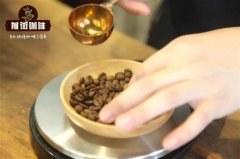How to judge how the milk foam of latte cappuccino coffee affects the taste of coffee

Professional coffee knowledge exchange More coffee bean information Please pay attention to coffee workshop (Weixin Official Accounts cafe_style)
Cappuccino, latte and white coffee are coffee drinks that contain milk. If these coffee drinks lack milk foam, we can't enjoy smooth and full taste.
Do you know what happens when you heat milk with a steam wand? Once the milk is frothed, its structure will undergo chemical changes. This article takes you to see what changes will be brought about after the milk is frothed and the impact on coffee.
Compounds in milk
Milk is a key ingredient in many coffee shops and an important ingredient in making many coffee drinks. Learn more about the changes in its structure and foaming, which can help to make and play a better flavor of coffee.
Milk is a nutrient-rich, complex liquid, still composed primarily of water, but containing hundreds of chemicals. These components can be divided into four groups: protein (1-20%), fat (2-55%), carbohydrates and sugars (lactose 0-10%), minerals.
Protein in milk
Protein is the most affected substance when heated, and it is also the key to affecting the quality of milk foam. Let's look at milk protein more.
In general, proteins can be defined as molecules made up of one or more long chains of amino acids held together by polypeptide bonds.
Maybe there are too many scientific words here, but the above sentence is simply that the proteins in milk are distributed throughout the liquid in different structures and sizes.
There are two main types of milk protein: casein and whey protein. The two proteins have different structures and react differently under stress, so they change differently when heated and steeped in milk.
The structure of protein is actually the difference in atomic arrangement. Casein in milk forms aggregates called micelles. These micelles are composed of??-, ??- And??- Casein is a protein with primary structure.
In short, casein has a simpler structure than whey protein, and this difference directly affects the behavior patterns of the two proteins when they are foamed by steam.
Casein is more stable than whey protein when heated, in other words, casein retains its structure better when heated.
Whey protein has a complex three-dimensional structure, and these structures will unfold when heated to 40 ° C, this process is called "thermal denaturation", whey protein will irreversibly lose its structure, resulting in heating will change its mode of operation.
How heating affects milk
Any heating action affects the chemical structure of milk proteins, but how it affects them depends on the temperature and length of heating.
Suppose you are using pasteurized milk, which means that before you get this bottle of milk, it has been through 72-80℃ and maintained for 15-30 seconds.
Pasteurization causes denaturation of some whey proteins but does not affect all whey proteins because the heating procedure is not long.
Excessive temperature treatment or heating is the cause of the change in milk taste, as sulfur is produced during heat treatment.
We'll come back to these proteins, which are key to successful foaming.
Milk in its natural state, its active chemical groups will be hidden in the complex structure of whey protein, when whey protein in the heating process, these active chemical groups will be released.
Because these chemical groups are active, they form new chemical chains with other whey components in these unfolded structures, which affect milk foaming.
How does this affect milk frothing?
How do these chemical changes affect your coffee?
When we foam milk, we force moisture and air into the milk by heating it, and the protein forms spheres in the air, which then turn into stable bubbles.
The protein chain in milk is polar: hydrophilic at one end and hydrophobic at the other, and as the protein unfolds during denaturation, the hydrophobic end tries to distance itself from the moisture in milk.
This means that the bubble structure of each milk bubble is full of protein chains at the hydrophobic end and the hydrophilic end is left in the milk liquid. This structure helps the bubble maintain its complete shape.
When milk froths to 30-40 ° C, it will produce an unstable state and will quickly form large bubbles. When the temperature is raised to 60℃, the milk foam can be more stable and improve its texture and density. At higher temperatures, smaller and better dispersed bubbles are formed.
Fat plays an important role in stabilizing milk foam. When the temperature exceeds 40 ° C, it melts all the lipids in the milk. This liquid fat penetrates to form a thin film on the surface of the bubbles, which helps prevent the bubbles from accumulating (so as to avoid the formation of large bubbles).
However, be careful to avoid heating to too high a temperature, in addition to causing the milk to produce sulfur flavor, it will also lead to milk foaming failure.
In its natural state, proteins adhere to bubbles, preventing small bubbles from aggregating into large bubbles. If you continue to heat the milk at this time, you will denature more protein, thus destroying its original characteristics and failing to stabilize the bubbles.
This also explains why you can't re-foam milk, and even if you re-heat it, the proteins in the milk won't have enough natural structure to form stable bubbles.
Milk with a higher lipid content may help to form more stable milk foam, but cream is the main fat in milk, and this is a large and heavy fat.
More than 95% of milk fat is small balls 0.1-15 microns in diameter, and in this large and heavy case, the bubbles will compress and cause bubbles to burst. Fat also overrides other flavors, meaning some of the flavor properties of the coffee beans themselves may be sacrificed.
But if you're thinking about skim milk, remember that fat can also affect the appealing taste of cappuccino and latte.
What does this mean to you?
When you want to pick milk to add to your coffee, the key is the protein content of the milk. Without protein, milk cannot foam. The high protein content of products such as coffee-specific milk is also for this reason, but if you can control the temperature effectively, you can also use regular milk foam.
The ideal temperature for foaming milk is between 60-63 ° C, below which unstable milk bubbles and large bubbles may be obtained; above this temperature, too much protein will be denatured, resulting in proteins in milk that do not have enough natural structure to form stable bubbles.
Using skim milk foam may give you stable foam, but it lacks the good taste of creamy milk. Using low-fat milk may result in stable foam and full-bodied milk.
Understanding the chemical composition of milk can help make a better espresso based drink, and by understanding how protein changes in milk, you can avoid foaming.
Try testing the foaming principle of milk with a steam stick today!
Important Notice :
前街咖啡 FrontStreet Coffee has moved to new addredd:
FrontStreet Coffee Address: 315,Donghua East Road,GuangZhou
Tel:020 38364473
- Prev

What kind of mysterious profession was a barista? What skills do you need?
Professional coffee knowledge exchange More coffee bean information Please pay attention to coffee workshop (Weixin Official Accounts cafe_style) resso) related drinks experts Japan and Britain are both world-famous coffee culture countries, which have developed into huge coffee cities.
- Next

Coffee flower is essential to it! Will different kinds of milk affect coffee?
Professional coffee knowledge exchange more information about coffee beans Please follow the coffee workshop (Wechat official account cafe_style) Milk consists of three main ingredients: protein, carbohydrates and fat. Protein accounts for 3.3% of milk. Proteins can be broken down into two elements: casein and serum protein. Serum, or whey protein, has nine essential amino acids, which add
Related
- What is the meaning of lactic acid fermentation with coffee bean treatment?
- How to judge the state of foam by sound?
- How does the latte pull out the unicorn pattern? Come to get for a little trick to improve the flower pull!
- Will flower pulling affect the taste of the latte?
- Do you know the history of coffee?
- The difference between honey treatment and sun washing what is raisin honey treatment?
- What kind of milk can a novice use to make coffee foam to keep the foam longer? The correct method and skills of milking tutorial sharing
- Why do washed coffee beans taste sour? Flavor characteristics of washed Coffee
- Introduction to the skill of how to practice the size and height of water injection around the circle of hand-brewed coffee
- How do beginners practice coffee flower drawing from scratch?

